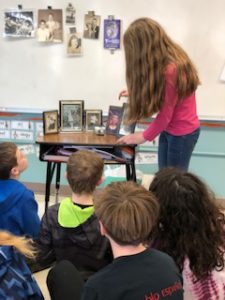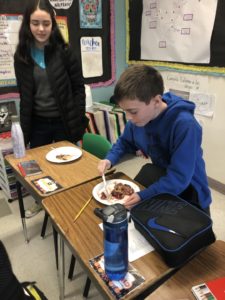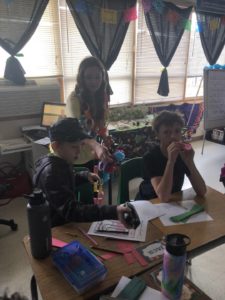La Lectura
• Determine or clarify the meaning of unknown and multiple-meaning words and phrases.
• Demonstrate understanding of figurative language, word relationships, and nuances in word meanings.
• Determine a central idea of a text and how it is conveyed through particular details; provide a summary of the text distinct from personal opinions or judgments.
• Trace and evaluate the argument and specific claims in a text, distinguishing claims that are supported by reasons and evidence from claims that are not.
• Describe how a particular story’s or drama’s plot unfolds in a series of episodes as well as how the characters respond or change as the plot moves toward a resolution.
• Engage and orient the reader by establishing a context and introducing a narrator and/or characters; organize an event sequence that unfolds naturally and logically.
• Understand the use of possessive pronouns.
• Spell word with x.
Dear families, in an attempt to help students with their Spanish reading at home (I have noticed students have been lacking Spanish reading practice!), and reinforce some of the concepts seen in class, students will be bringing Spanish reading homework packets every Monday. It is their responsibility to turn in their homework on Friday. Please make sure that your child has a consistent daily reading routine in Spanish of at least 15 minutes every night. I always remind the importance of practice, in order to achieve advanced levels of accuracy in their second language. Thank you for your continued support!
Ciencias
 During this investigation, students investigate the underlying mechanisms of change in population. They learn how organisms inherit traits from their parents and how dominant and recessive alleles interact to produce traits in a population. Some of the big concepts we will see during this investigation are:
During this investigation, students investigate the underlying mechanisms of change in population. They learn how organisms inherit traits from their parents and how dominant and recessive alleles interact to produce traits in a population. Some of the big concepts we will see during this investigation are:
• Heredity is the passing of information from one generation to the next.
• Chromosomes are structures that contain hereditary information and transfer it to the next generation; they occur in nearly identical pairs in the nucleus of every cell.
• Genes are the basic units of heredity carried by chromosomes
This week, students looked at four of their features to determine what trait they have: little fingers straight or bent, earlobes attached or not, hairline forms a widow’s peak or not, and tongue can curl or not. They determined the distribution of the four traits in the class. Students then studied a population of larkeys, a make-believe animal, to analyze their traits.
Students are encouraged to bring some family photographs to share with the class!
Mathematics

 This week we learned about pi!
This week we learned about pi!
- We listened to 100 digits of pi song
- We also figured out how to use it in fraction and decimal form to calculate circumference and area.
- The equation for area is πr2
- The equation for circumference is πd
(Written by:Evan)
History & Geography
This week we learned about Napoleon and his role in the French Revolution.
- We talked about how Napoleon Bonaparte changed France after the Reign of Terror.
- We discussed his successes in France and his downfall
- We read journal entries by a Napoleonic soldier.
English Writing & Spelling
In writing this week we continued working on our argumentative writing piece.
- We added titles to our argumentative writing.
- We exchanged words in our writing.
In Greek and Latin Roots this week we
- Finished our greek and latin roots packet (Bi, du, amphi/ambi) which means two, or both.
(Written by: Tamra)
